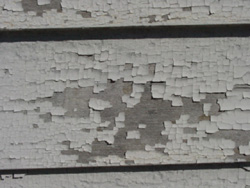Lead Paint
Lead Paint and Your Health
 Lead paint is a known source for potential life threatening health risks. This year we’ve seen the introduction of a very significant lead paint law which aims to protect us from the potentially dangerous side effects from lead. While many of us feel the new law is poorly written and likely to put serious financial burdens on homeowners it’s hard to fault the intent of the new law.
Lead paint is a known source for potential life threatening health risks. This year we’ve seen the introduction of a very significant lead paint law which aims to protect us from the potentially dangerous side effects from lead. While many of us feel the new law is poorly written and likely to put serious financial burdens on homeowners it’s hard to fault the intent of the new law.
Regardless of how you feel about the new lead paint law you should be very concerned about lead paint dangers. Below is a quick summary of the dangers to lead exposure and why everyone should be concerned about it.
Lead Based Paints
According to Wikipedia
In 1977 the United State’s banned lead paint. As a result the EPA recently announced that homes built prior to 1978 are at a high risk of containing lead based paints. Because of the high risk associated with those homes the new Renovation, Repair and Painting (RRP) Law was passed.
Lead paints are dangerous in several ways. First of all chipping lead based paint can easily be ingested by small children. The most dangerous period for lead paint exposure is in children 6 years of age or younger. The other dangerous situation is during renovations and repairs where lead paint dust is generated and inhaled. Again, children and pregnant women are at risk for lead paint poisoning.
- Lead can affect children’s brains and developing nervous systems, causing reduced IQ, learning disabilities, and behavioral problems. Lead is also harmful to adults.
- Lead in dust is the most common way people are exposed to lead. People can also get lead in their bodies from lead in soil or paint chips. Lead dust is often invisible.
- Lead-based paint was used in more than 38 million homes until it was banned for residential use in 1978.
- Projects that disturb painted surfaces can create dust and endanger you and your family.
Lead Poisoning Symptoms
Lead poisoning symptoms include abdominal pain, headache, anemia, irritability, and in severe cases seizures, coma, and death. Lead is toxic to organs and tissues in the body including the heart, bones, intestines, kidneys, and reproductive and nervous systems. It inhibits the development of the nervous system which makes it extremely dangerous to young children during development.
If you’ve been exposed to high levels of lead or have children living in a home built prior to 1978 it’s a goo d idea to discuss the issue with your doctor. Simple tests can be done to find out if you’re body has been exposed to elevated levels of lead.
Lead Poisoning Is Still A Serious Health Concern
Again I’m not a huge fan of the new lead paint law as it was poorly written in my opinion. However, lead paint poisoning is still a very serious health concern in our Country. According to the CDC, approximately 250,000 U.S. children aged 1-5 years have blood lead levels greater than 10 micrograms of lead per deciliter of blood, the level at which CDC recommends public health actions be initiated.
Awareness Is The Key
The real key to preventing lead paint poisoning is awareness. Protecting your family and friends from lead is easy once you understand the potential dangers.
- If you live in a home built prior to 1978 you should be aware that the house most likely contains lead based paints.
- If you have young children in the house speak with a doctor about risks associated with lead paint poisoning.
- Keep children away from pealing and chipping paint in older (pre 1978) homes.
- Use lead safe working practices if you perform your own renovations or remodeling.
- If you hire a contractor to work on your home be sure they are lead paint certified.


















oh man I LOVE lead paint it tastes soooo good….
Hi Todd,
A timely and very relevant article for today’s lead paint issue. Thanks!
Thank you so much for informing me about the effects of lead paint in older homes. You’ ve saved me alot of future damage to my health.